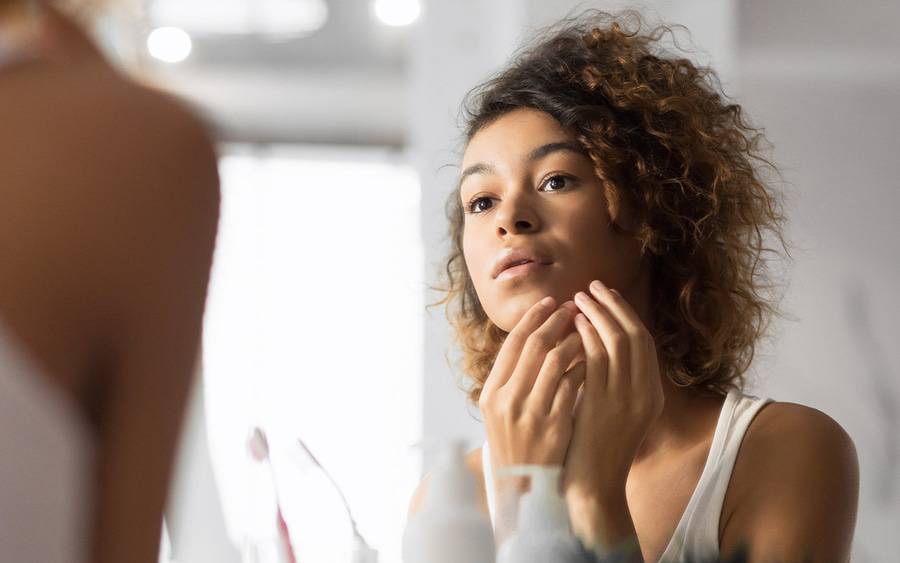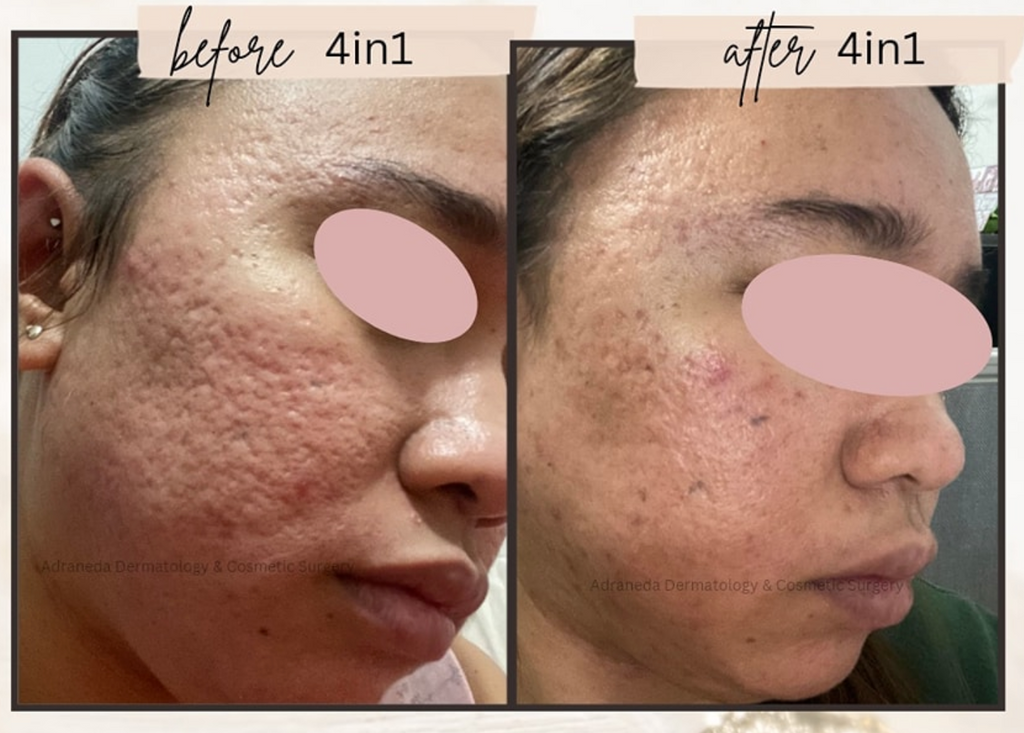Top Acne Treatment for Sensitive Skin: Mild Solutions for Clear Skin
A Comprehensive Overview to Taking Care Of Skin Problems: Concentrating On the Treatment of Acne Marks
Acne scars represent a considerable problem for lots of individuals, typically impacting self-worth and total skin health and wellness. Comprehending the different kinds of acne marks, such as atrophic and hypertrophic, is crucial for reliable administration and treatment. This guide describes a range of restorative alternatives, from topical agents to sophisticated specialist interventions, each tailored to address particular mark features. Including lifestyle changes and a specialized skin care routine can play an essential function in enhancing therapy end results. As we check out these techniques, the inquiry emerges: what combination will generate the most effective outcomes for optimal skin healing?
Comprehending Acne Scars
Understanding acne scars involves identifying the complex interaction between skin healing and the inflammatory processes that happen during acne episodes. Acne establishes when hair follicles come to be clogged with oil, dead skin cells, and microorganisms, bring about swelling. acne treatment for sensitive skin. This inflammatory feedback is important for battling infection however can additionally result in damage to the skin's tissue
When the body tries to recover itself, it produces collagen, a healthy protein necessary for skin structure. Nevertheless, the quantity and quality of this collagen can vary, bring about various sorts of scars. Elements influencing mark formation consist of the seriousness of the acne, specific skin kind, genes, and the body's healing feedback.
Additionally, very early intervention in acne treatment can play an essential role in stopping scarring. Timely monitoring of outbreaks reduces inflammation and cells damages, which are important factors in scar development. Education and learning on proper skin care and therapy options is crucial for individuals prone to scarring. Inevitably, comprehending the underlying mechanisms of acne and its healing procedure is vital for efficient administration and prevention of acne marks.
Kinds of Acne Marks
The complexity of acne scars can be classified right into numerous distinctive kinds, each showing the underlying skin damages and recovery response. The most typical types include atrophic scars, hypertrophic marks, and keloids.
Atrophic marks are characterized by depressions in the skin and are commonly the result of insufficient collagen manufacturing throughout the healing process. These scars can better be classified right into icepick, boxcar, and rolling scars, each varying fit and deepness. Icepick marks are deep and narrow, resembling little punctures, while boxcar scars have a broader, more angular look. Moving marks produce a wave-like structure on the skin's surface area.
Hypertrophic scars, on the various other hand, are increased and result from an overflow of collagen during healing. These scars might differ in dimension and can in some cases discolor over time but may remain prominent.
Keloids are a much more extreme type of hypertrophic scarring, extending past the original injury website and commonly needing extra aggressive therapy options. Comprehending these kinds is vital for identifying the most reliable treatment approach tailored to a person's details mark kind and skin problem.
Topical Treatments
Topical therapies play an important function in handling acne marks, offering patients a variety of choices focused on enhancing skin structure and look. These treatments mostly concentrate on promoting skin regrowth, lowering pigmentation, and improving total skin tone.
Among one of the most commonly used topical agents is retinoids, which are derivatives of vitamin A. Retinoids promote collagen production and increase cell turn over, aiding to reduce the look of marks over time. In addition, alpha hydroxy acids (AHAs) and beta hydroxy acids (BHAs) can scrub the skin, getting rid of dead skin cells and promoting a smoother surface.
Another efficient group consists of topical anti-oxidants, such as vitamin C, which can help to lighten hyperpigmentation related to acne scars while offering anti-inflammatory advantages. Silicone gels and sheets have been shown to moisturize and flatten scars, making them much less visible.

Specialist Treatment Alternatives
When it comes to addressing a lot more extreme acne marks, patients often transform to professional treatment alternatives that can provide much more significant results than topical treatments alone. These interventions are usually carried out by skin specialists or certified experts and consist of numerous techniques customized to individual skin types and scar intensity.
Among the most typical treatments is chemical peels, which use acids to scrub the skin and promote regeneration. This method can considerably decrease the look of shallow scars. Microneedling, one more efficient alternative, entails developing micro-injuries in the skin to boost collagen production, enhancing texture and content lessening scars.
Laser therapy is also commonly used, with fractional lasers specifically targeting marked regions while preserving bordering skin. This technique can generate exceptional enhancements in skin appearance over numerous sessions - skin rejuvenation treatments. Furthermore, facial fillers are utilized to recover quantity and smooth out irregular skin surface areas, supplying immediate, albeit momentary, results
Way Of Life and Home Remedies
Integrating way of living modifications and natural remedy can play a considerable duty in managing acne marks, complementing specialist treatments. Keeping a well balanced diet regimen rich in anti-oxidants, minerals, and vitamins can facilitate skin recovery. Foods high in vitamin C, such as citrus fruits, and those consisting of zinc, like nuts and seeds, advertise skin regeneration and help in reducing inflammation.
Hydration is likewise critical; drinking adequate water keeps the skin hydrated, aiding in its all-natural repair procedures. Regular workout improves blood flow, which can enhance nutrient shipment to the skin and enhance general skin tone.
Along with nutritional adjustments, including topical home treatments can be useful. Natural ingredients such as aloe tea, honey, and vera tree oil have antibacterial and anti-inflammatory residential properties, which may aid in reducing the appearance of scars. Exfoliating the skin with gentle scrubs can also promote cell Extra resources turnover, assisting in the fading of scars with time.
Furthermore, establishing a regular skin care routine that includes sunlight security is vital, as UV exposure can dim scars. By combining these way of living adjustments and natural remedy, individuals can enhance their skin's healing process and accomplish an extra even skin tone.
Verdict

Recognizing acne marks entails acknowledging the complicated interaction in between skin healing and the inflammatory procedures that happen during acne episodes. Variables affecting mark development include the severity of the acne, individual skin type, genes, and the body's healing feedback.
These scars can additionally be categorized into icepick, boxcar, and rolling scars, each differing in shape and depth. Icepick marks are slim and deep, resembling little slits, while boxcar scars have a wider, much more angular look.Reliable monitoring of acne scars requires an extensive understanding of their kinds and the hidden devices entailed in mark formation.